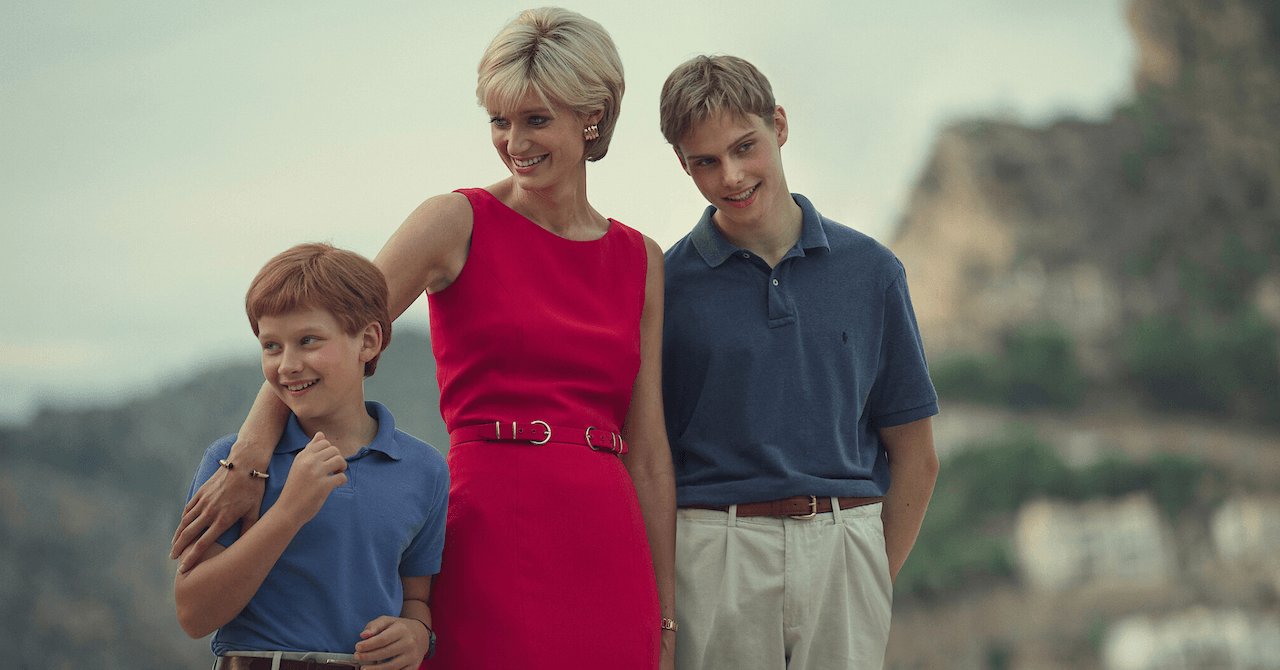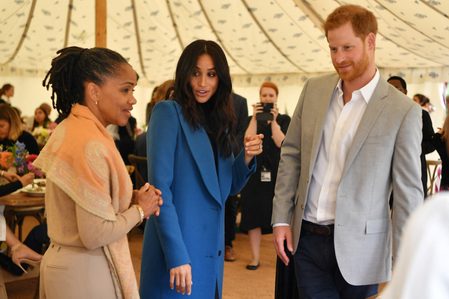SUMMARY
This is AI generated summarization, which may have errors. For context, always refer to the full article.

This review contains spoilers.
The concluding chapter of The Crown, which saw the reigns of Queen Elizabeth II pass from Claire Foy to Olivia Colman and finally to Imelda Staunton, is marked by the weight of real-world events. The passing of the Queen at 96-years-old back in 2022 is a crucial backdrop, and the show, which has been rivetingly translating her life and legacy onto the small screen, has seen a bit of a wobbly transition into the third and final leg of her onscreen depiction.
Often sacrificing historical accuracy for dramatic tension, The Crown has seen its fair share of controversies due to its slippery relationship with the monarchy. Does the show hate the royals? Or is it a nuanced portrait of their personal follies and the institutions that make them fallible? Regardless, what I am sure about is that the show’s foray into the fictional is to its benefit since it provides the gift of generous insight. The royal family, usually shrouded in secrecy and mystery, have become much more like three dimensional characters thanks to made-up interactions and moral dilemmas.
Addressing head-on the privilege, out-of-touch demeanor, and historical antiquity commonly, and rightfully, thrown at the monarchy, the show makes its bread from showing how the Queen compromises and adapts in light of these critiques. There is also a theme of traditionalism meeting modernism in its dramatic conflicts, most notably embodied in Diana’s character introduced in season four, and who seizes the spotlight from everyone in season five onward. In many ways, she is the antithesis of the Queen; Diana is young and contemporary, while Elizabeth is too self-sacrificing to a fault.
Unfortunately, The Crown season six doesn’t explore that dichotomy. For a show that started with a young mid-20s Queen thrust into the unimaginable weight of duty, her centrality receded as the decades kept piling on. This is the mistake that haunts the final season: where is the Queen? By delving into the ‘90s, arguably the most infamous era of the royal family due to its deluge of divorces and lurid scandals, the show lessens the depth of its core to make way for replicating iconic moments that captured the public’s attention. The episodes end up acting as window dressing to real-life events instead of being stories with any bite.
Season six is empty pomp and circumstance. It’s a merry-go-round of Princess Diana’s sorrows, Prince William’s coming of age, and Prince Charles’ attempts at redemption. It’s only in the end that the series fixes its blurry focus, and by then, it’s too late. Take for example the final dilemma that writer Peter Morgan gives the Queen in the series finale. Fresh off of her golden jubilee, she stumbles at the decision of whether or not to step down from the throne for Charles, who now seems ready to lead. By all accounts, this should be a tense dramatic conflict rife with personal stakes.
But it doesn’t end up leading anywhere. Claire Foy and Olivia Colman return to give devil’s advocate advice to the now-gray haired queen, but their words amount to nothing we already don’t know. The talented pair of actresses hang on Staunton’s shoulders, telling her that she shouldn’t abdicate — a debate that could’ve been an interesting plot point if it was explored right from the beginning of the season. Of course, she doesn’t step down and she goes on to sit on the throne for 20 more years. So this dilemma rushed smack dab in the middle of an hour-long finale just feels unearned and disconnected from the rest of the season.
One could make the argument that the Queen’s reduced role is a reflection of public sentiment. The growing presence of Diana couldn’t be ignored, exemplified by Elizabeth Debicki’s turn as the more free-spirited yet lonely Princess Diana of the ‘90s. No matter how more publicly conscious Diana’s relevance was in this era, putting this much focus on her removes the singular perspective that has made this show different from everything else that came before it. What is the Queen’s angle in all of this?
Season four deals with that question the best, ending in an unexpected pep talk between Prince Philip and Diana where the former reminds the latter who the real center of the universe should be when it comes to the monarchy. It’s not her, nor is it Charles, nor is it the idea of the crown itself — it’s always been the Queen. It’s why when the series reaches what could be an expensive display of recreation through the royal wedding of 1981, the episode cuts to black and moves on to the next thing. Once upon a time, the show was smart enough to let real life do the heavy lifting.
On the flipside, the interplay between Muslim traditions and the royal family’s dynamics is handled with a touch of genius buried underneath all the clutter, drawing parallels between Mohammad Al-Fayed’s self-made success and the monarchy’s wielded power. This association inevitably influences the trajectory of Dodi Al-Fayed and Diana’s relationship, shedding light on the potential errors and fruits of their short-lived union.
Part one, released in November, delved into the paparazzi-driven narrative surrounding Diana and Dodi, while part two, dropped this December, explores the aftermath of their untimely deaths. The narrative then narrows its focus on the grown-up Prince William studying at St. Andrews College. It is here that he encounters Kate Middleton, an unassuming yet captivating young woman who secretly harbors feelings for the prince. It’s a typical romance sandwiched in between the political intrigue of Tony Blair and the existential thoughts of the Queen. Which, if the previous sentence wasn’t already an indicator, is a wildly unsuitable and inconsequential subplot. But, hey, at least you recognized something that happened in real life.
Prince William, portrayed by Ed McVey, emerges as the spark that revitalizes the season. Everything else is thin and threadbare. The Queen, once again, confronts a shifting world, and must find new ways to change for the nth time. Charles, once again, remains entangled in his long-standing yearning for Camilla. However, the breath of fresh air emanates from William’s tentative reluctance to embrace Diana’s enduring popularity, now seemingly bestowed upon him without his choice. Simultaneously, he grapples with the anger and grief stemming from her untimely demise. While McVey’s performance is commendable, the storyline’s brilliance lies in the writers’ ability to seamlessly intertwine it with the narratives of Philip, Charles, and later, the Queen herself.
The takeaway from this final season is how glaringly unrecognizable many of its characters feel. Princess Margaret’s eventual demise failed to evoke any emotional response, as she merely recalled Vanessa Kirby and Helena Bonham Carter’s portrayals on a superficial level. And that rings true for the Queen too, whose past incarnations physically materialize in the final episode, and instead of feeling a tinge of nostalgia, you only feel an overwhelming sense of exhaustion. – Rappler.com
The sixth season of ‘The Crown’ is now streaming on Netflix.
Add a comment
How does this make you feel?






There are no comments yet. Add your comment to start the conversation.